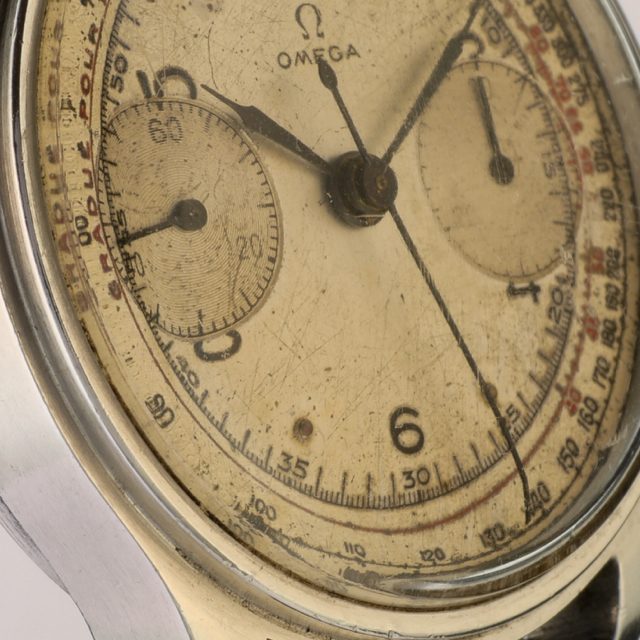
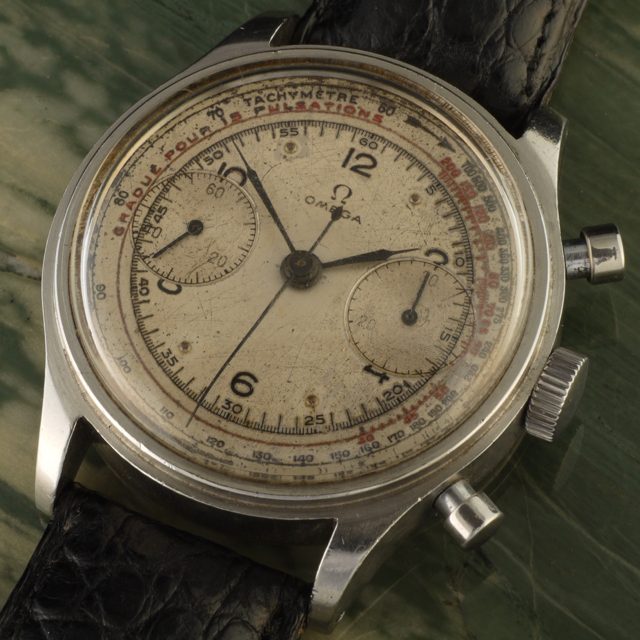
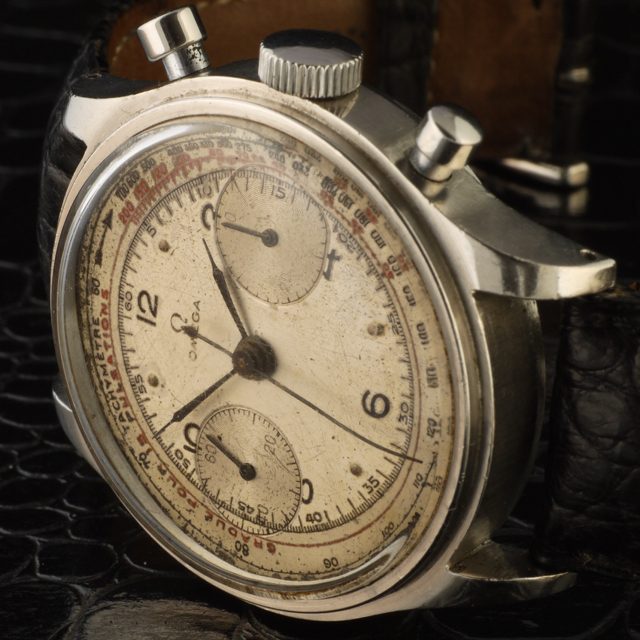
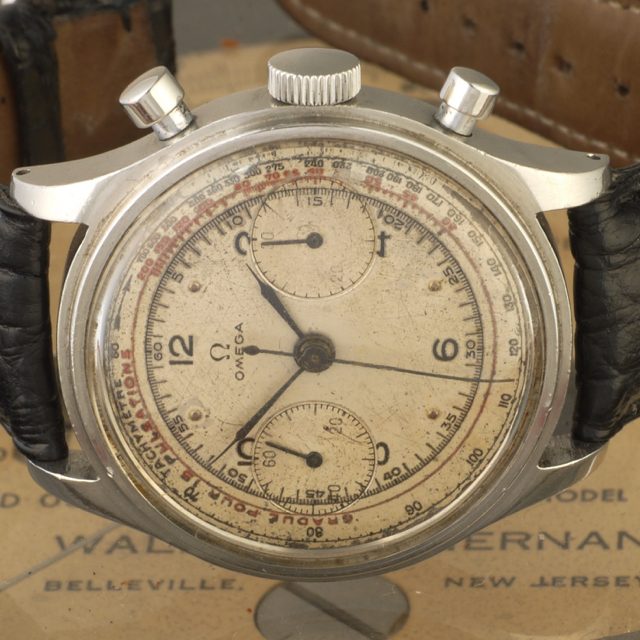
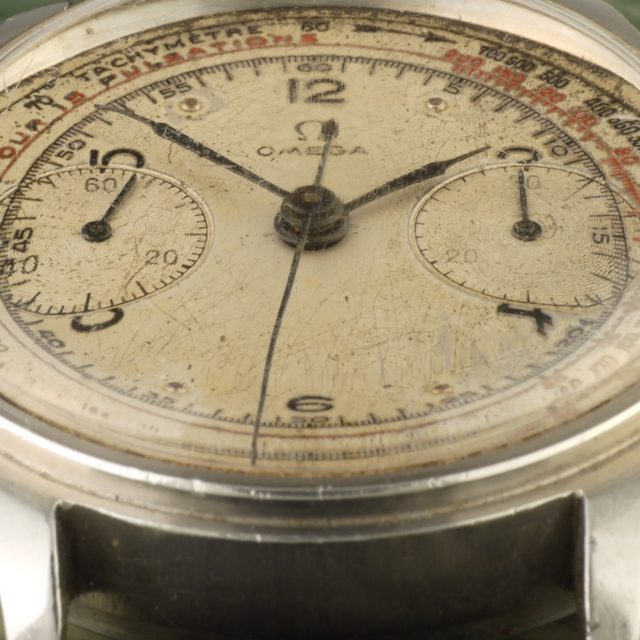
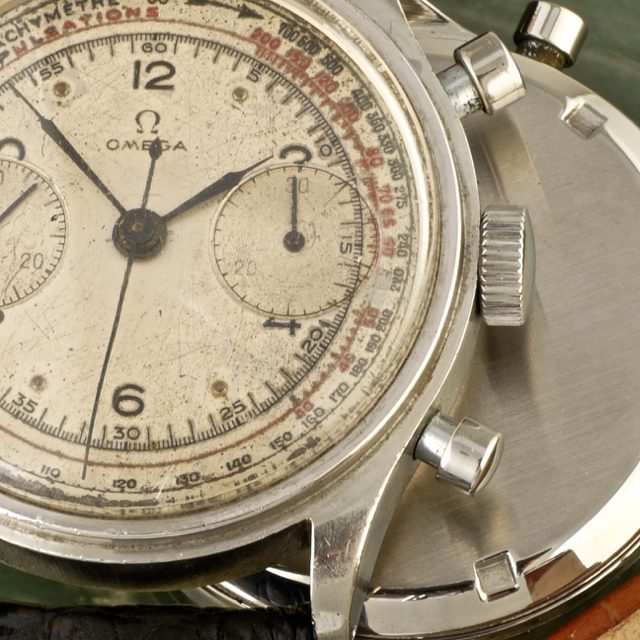
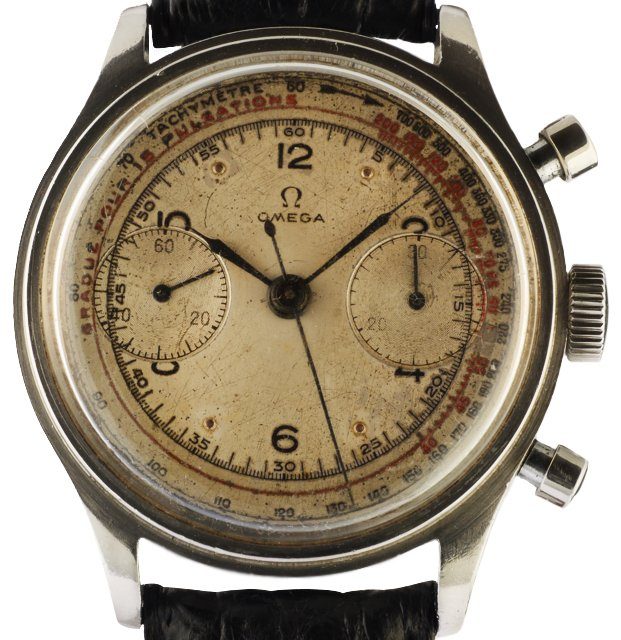
Omega Chrono Tachy-Pulsometer
Allies invade Normandy on D-Dayrare 1944 Omega cal 33.3 ref.CK 2077-2, steel water resistant Military style 38mm. step case with screw-back case, silvered dial with tachymeter and telemeter, nice blue Plume hands.
The Omega cal. 33.3 chronograph series, which is considered to be a forerunner of the Speedmaster, is one of the most sought-after chronographs by Omega. It is said that only 14,000 movements were produced for 20 years.
During WWII, the watches needed to become more robust and waterproof due to their military application, so the chronograph with round pushers and screw back cases was a must at that time.
The step case chronographs are a special group of chronographs from the 1940s. The watches from this series are so called because of the shape of the case: the noticeable step between the crystal and the case edge. One characteristic of this watch is that the entire case is made from a single piece of steel, so the watch is less likely to have the water come into the case. That’s why it is called a monoblock case. To seal the connection between crystal and housing, an additional steel plate was manufactured and used.
A tachymeter scale measures how fast an object is moving. The scale can be found either on the dial or in the bezel. Most tachymeters start at 400 and end at 60, but some models can show different numbers. Its very simple to calculate the speed: just mark a point and push the start button. After the object has moved for one kilometer (or mile), push the stop button. The number indicated by the hand shows the speed of the object in km/h or mph, depending on the unit chosen.
The telemeter scale was an innovation at the time the watch was released. Very useful in combats because it could give the distance an explosion was taking place, for example. By the 1940s, the demand for this watches has increased tremendously.
Omega was founded in 1848 by Louis Brandt at the age of 23. The brand’s reputation grew fast and in 1895 the watches achieved a precision of 30 seconds a day.
By the turn of the 19th century Omega was one of Switzerland’s largest watch companies with 240,000 watches produced annually and employing 800 people.
Omega made its debut in sports during the Gordon Bennett international ballooning Cup in 1917; since then Omega has gone on to be the official timekeeper at 21 Olympic Games.
In 1936 Omega set the remarkable World precision record of 97.8 points at the Kew-Teddington observatory in England.
In 1957, with motorsport in mind, Omega launched the Speedmaster, which in 1965 was chosen by NASA as its official chronometer in Space. Four years later the Moonwatch was the first watch to be worn on the Moon, when on 21st July 1969 Neil Armstrong made his giant leap for mankind. Currently Omega belongs to the Swatch Group.
